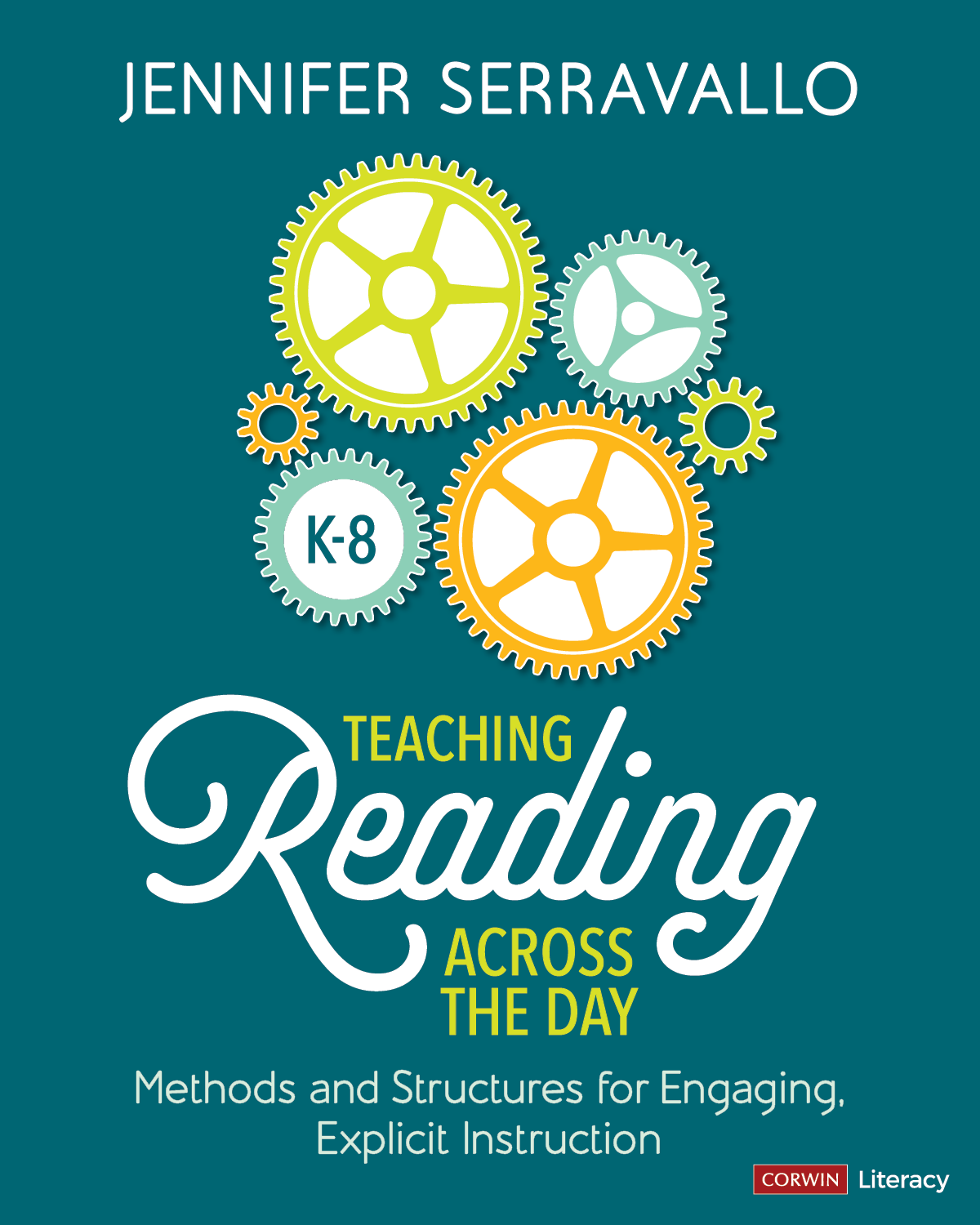Four Ways Lesson Structures Save the Day
April 15, 2024
If you’ve read any of my books, you have likely noticed how much I rely on structure in my writing to make my books easy to navigate and enjoyable to read. I bring this love of structure to teaching, too. I think when you use structure to guide both planning and teaching a lesson, it allows your instruction to be tight, focused, and intentional. In my new book, Teaching Reading Across the Day, I share nine lesson structures that will help you cover all the reading skills students need to become proficient readers—no matter your subject or grade level. Below, I share just a few of the ways that lesson structures can help you deliver explicit, engaging reading instruction.
Lesson structures save you time.
Relying on a small handful of generalizable lesson structures allows you to re-use them no matter your curriculum or core program, text, or subject. For example, you can use the same structure for read-aloud lesson to explicitly teach comprehension whether you are reading an excerpt on whales from your science textbook or engaging children in thinking about a rich novel in ELA. Ditto for close-reading or guided inquiry lessons. You will follow the same steps and processes and use similar moves to engage learners. With a small set of structures, you know the procedure, you know what activities to use, you know how much time to spend, and most importantly, you know exactly how you are going to conduct your lesson. Once you’ve mastered a particular lesson structure, you can, and should, use it again and again to highlight different reading goals and build knowledge and vocabulary with different texts. The structures will become so familiar that you will easily decide which of the nine structures best fits your goals and move quickly and efficiently through planning and preparation.
Lesson structures focus your – and your students’ – attention on content.
When you have a set of predictable lesson structures, you have more time to concentrate on content rather than process. When you are ready to deliver the lesson, you can stick to a clear pace, introduce strategies, activities, and key vocabulary and concepts as planned, and engage students.
Furthermore, predictable lesson structures allow your students to focus on learning content rather than procedure. Research into cognitive load shows that our working memory only has so much space and capacity. So, when you are introducing new content, vocabulary, skills, and strategies, you want to lighten your students’ cognitive load, so their focus is on what you’re teaching. With familiar processes, the content, the vocabulary, the knowledge building, and the skills take center stage.
Lesson structures allow for responsive teaching.
Lesson structures – at least those in my book – are flexible. As you plan your lesson using a lesson structure you will anticipate where students might require more guidance, could benefit from a slower pace, or need further clarity, and you’ll plan accordingly. You’ll know to look and listen for certain key indicators that show students are on track with your lesson goals or need prompts, questions, redirections to keep them moving toward the lesson objective(s). But no matter how carefully you prepare a lesson, students will surprise you and you’ll have to pivot to meet their needs. When you’ve thought about how you might respond, it makes these in-the-moment decisions that every teacher makes dozens of times a day more instinctive and fluid. And more than any program or curriculum, it’s your experience and responsiveness that can have the biggest impact on student learning.
Lesson structures should incorporate research-backed practices.
I’m a big believer in using research to inform classroom practices to give us the best shot at successfully reaching the most students. However, perhaps you’ve had an experience where you’ve spent hours searching for lessons, or have used lessons in a scripted program, only to later learn that the recommendations were not research-based. In Teaching Reading Across the Day, I translate decades of research on the teaching reading into doable classroom practice. For each of the nine lesson structures, I share the research base that is aligned to that lesson type. So, you can rest assured that when asked if you are using research-based practices to teach reading, you can say yes.
Learn more about my new book, Teaching Reading Across the Day, due out April 30, 2024.
Preorder now with code SERRAVALLO for -25% and free shipping.


